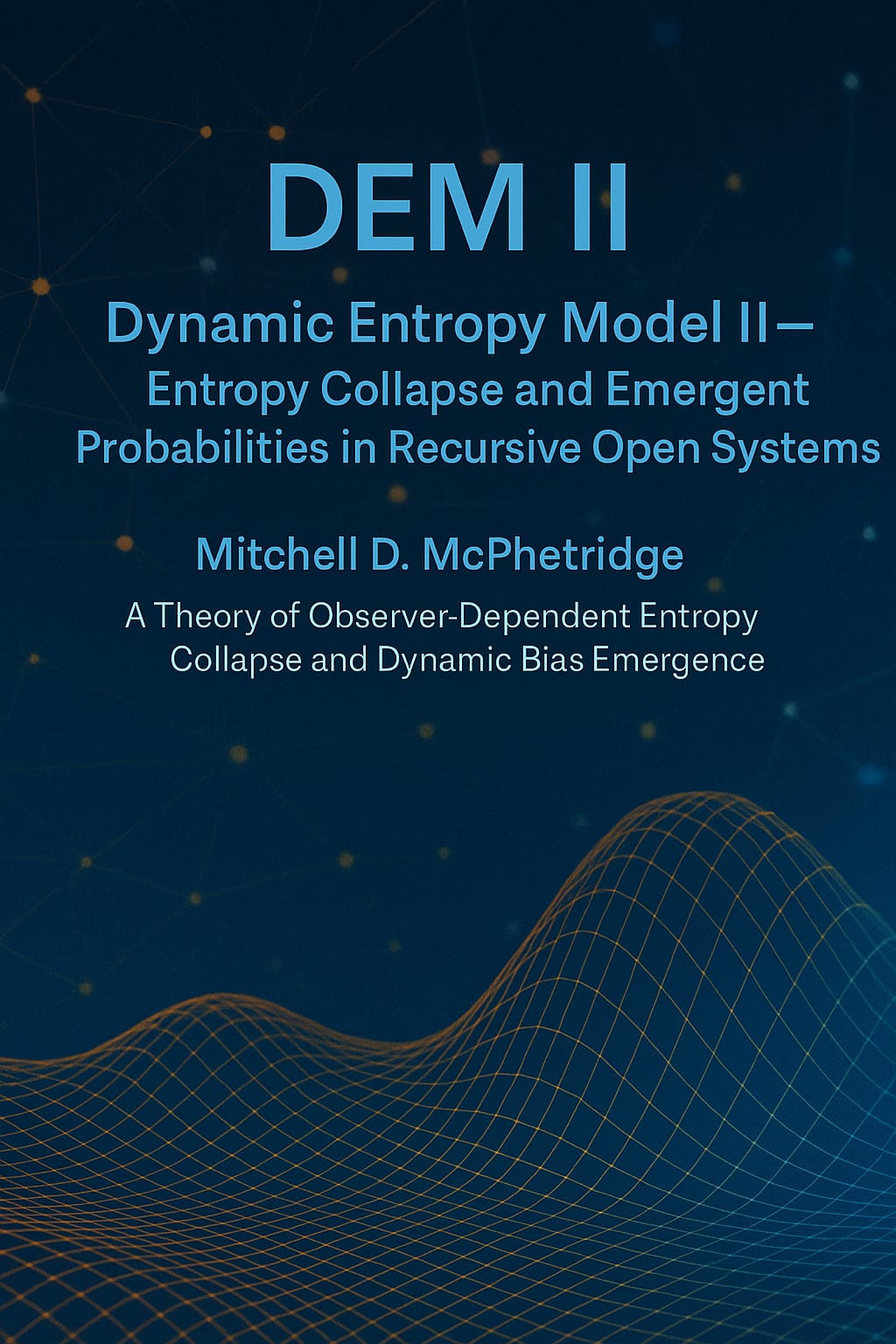Medium
1M
246

Image Credit: Medium
DEM II: Dynamic Entropy Model II; Entropy Collapse and Emergent Probabilities in Recursive Systems
- The article introduces the Dynamic Entropy Model II (DEM II), a post-Shannonian framework that models entropy as an emergent, recursive, and observer-sensitive flow within open systems.
- DEM II addresses the limitations of classical Shannon entropy by considering observation collapse, emergent probability distributions, and chaotic environmental coupling.
- Entropy in real-world systems is portrayed as an evolving property influenced by interactions, collapse events, and environmental entanglement, rather than a passive function of known probabilities.
- It integrates tools from information theory, control theory, stochastic dynamics, AI, and philosophy of physics to redefine entropy as an actively regulated, emergent structure.
- Core contributions of DEM II include a dynamic entropy model accounting for observer interaction, observation-induced probability reweighting, and an entropy-feedback control mechanism.
- The article discusses simulation goals comparing classical Shannon entropy with DEM II entropy under various scenarios like biased vs unbiased starting distributions and feedback entropy controllers.
- Applications of DEM II range from quantum systems to AI ethics, ecological modeling, cognitive architectures, and generative AI, showcasing its diverse potential domains.
- The paper delves into technical aspects like time-dependent entropy evolution equations, probabilistic evolution models, entropy feedback control mechanisms, and entropy engineering from an optimal control perspective.
- The proposed theory envisions entropy as a steerable dimension, essential for fields like AI, quantum computing, ecosystem modeling, and neuromorphic hardware.
- The article emphasizes the synergistic architecture of DEM and DREM for modeling learning systems and adaptive autonomy, paving the way for Artificial General Intelligence (AGI) and intelligent self-regulation.
- By bridging information theory, control theory, thermodynamics, machine learning, and biological adaptation, DEM II offers a fresh perspective on the interplay between entropy and complex systems.
Read Full Article
14 Likes
For uninterrupted reading, download the app